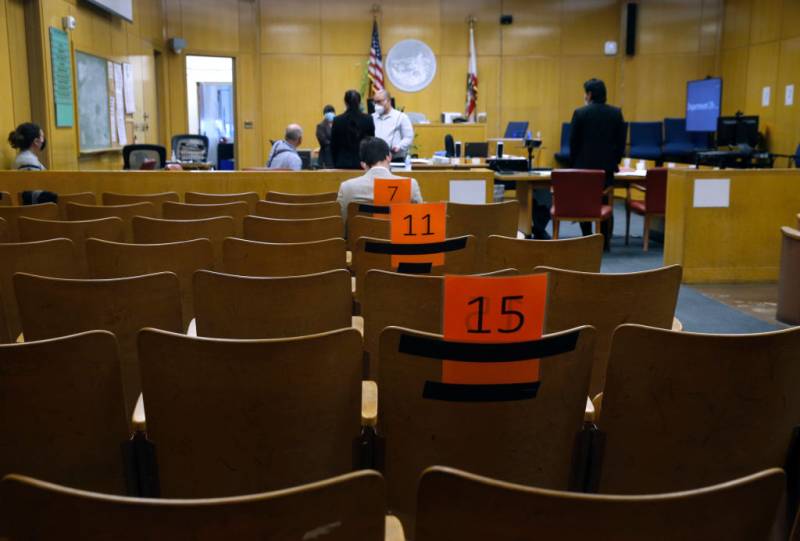It tells you that we need to do something different in California. Right now, the rules are corporations and companies and businesses do not have to pay for their employees to serve jury duty. They have to give you the time off, but they don’t have to pay you to serve. So you’re taking the time without pay. And currently, the law is still that you don’t get paid your first day. If you get selected, you don’t get paid your first day and you get $15 a day for the duration of the trial. And that just doesn’t even pay for parking for most people, as you can imagine.
The $100 a day, which is what this pilot put into place, has really made a difference. So people who are employed where their employers do not pay for them to serve there are self-employed, underemployed or unemployed. This really made a difference for people. They surveyed folks and 95% of the people who participated in the pilot responded. That’s a high rate for surveys, as you can imagine. And it was all very positive. People really enjoyed the fact that they could actually participate in their civic duty and they didn’t have to feel like they couldn’t feed their family or pay their rent to do it. So it was a really positive experience all the way around.
And there’s something kind of counterintuitive here with jury duty service, right? Because it is seen as the highest engagement of civic duty. And yet it is so hard to do. It creates such a hardship for so many people.
Yeah, there was a study done. It was either right before the pilot started or during the pilot where someone from the DA’s or the public defender’s office went into a trial and took a measurement of the demographics. And so before they were asked about hardships, the jury pool was 49% color, 51% white. And then after the judge asked for the hardships and people raised their hands and they got dismissed, the demographics shifted to 39% people of color and 61% white. So that was a 10% drop in the people of color demographic and, again, a 10% increase for those who got seated and actually served. And those aren’t the demographics in San Francisco at all. San Francisco has 63% people of color when you combine all the groups together and 37% white people. And this is the complete opposite that sits on a jury now. And that’s not how this should look.
So from a legal standpoint, what does it mean to have more economically and racially diverse jury pools?
It means better deliberations among the jury pool. It means more life factors coming into the conversation when people are deciding life and death for someone, [or] life imprisonment for someone. And that is the purpose of having a jury. If you are going to take kind of a monolithic group and have them decide for a swath of a diverse community what the outcomes of a case should be, we can just do bench trials where there’s basically just one judge making the decision. But the whole purpose of a jury trial is to have people from various walks of life considering the facts and weighing in on a very important decision that’s going to change somebody’s life.
Is there anything like this program elsewhere in California or the country?
My understanding is this [pilot program] is the first of its kind. And what’s being considered now is they’re going to measure it again in a year after March. So in March 2023, they’re going to do another study of the outcomes and surveying people. And then they want to get the study results out to other localities to think about it. Now, you can imagine the biggest barrier will be money. But I think the results are pretty impressive, that it really does make a difference … because we all know the economics are tied to race, right? And so it really just does take a big swath of people out of consideration to sit as jurors. And although the study didn’t address this directly, I believe it has an impact on gender as well.
How are you seeing that?
Day care. If you have single mothers who have to have someone take care of their children while they’re trying to do this, you just can’t do that economically. There’s the whole notion, especially in San Francisco, that one of the biggest employers in the city now is tech companies. And not a lot of women work in tech. This is anecdotal because, again, the study did not look at this, but my guess is that there is an impact on women serving on juries because of the economics.
Do you think San Francisco’s implementation of this program could be a model?
Yes. And again, the demographics that came out of the study were pretty impressive. They measured the race of the groups of the people who participated in the pilot, and it was 37% white. And these were people who actually got paid and served. So 37% white, 13% Hispanic/Latino, 7% mixed race, 5% African American and 1% Hawaiian. That almost mirrors the demographics in San Francisco. In the general population there’s just a percentage point or two off in some categories, but it’s very similar to the makeup of the city.

